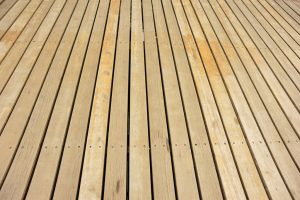When your home starts to show signs of wear and tear, it can be tempting to rush out and buy the first fix-it kit you see. However, not all home repair methods are created equal – some are more sustainable than others. Here are some tips for repairing your home in an earth-friendly and sustainable way.
- 1. Use salvaged materials whenever possible.
- 2. Consider energy-efficient alternatives.
- 3. Choose non-toxic and natural cleaners, paints, and finishes.
- 4. Use plastic materials wisely.
- 5. Repair rather than replace.
- 6. Look for water-saving features.
- 7. Take advantage of solar power.
- 8. Inspect your home regularly for any necessary repairs.
- 9. Educate yourself on sustainable home repair methods.
- 10. Hire a contractor who specializes in sustainable home repair.
1. Use salvaged materials whenever possible.
Salvaged materials are pre-owned building materials that have been removed from another structure and can be reused in your own home repair project. Reusing these materials reduces waste and the need for new resources, making it a more sustainable option than buying new materials. When choosing salvaged materials, be sure to inspect them carefully for any damage or wear that could affect their structural integrity.
2. Consider energy-efficient alternatives.
When choosing new windows, doors, or insulation to replace older ones, look for energy-efficient options that will help reduce your carbon footprint. These products are often more expensive than their traditional counterparts, but they can save you money in the long run by reducing your energy costs. Always compare the long-term cost of an energy-efficient product to its traditional counterpart before making your final decision.
3. Choose non-toxic and natural cleaners, paints, and finishes.
Toxic cleaners, paints, and finishes can release harmful chemicals into the air and damage your health and the environment. When renovating your home, opt for non-toxic and natural alternatives instead. You can find these products at most home improvement stores but always read the labels carefully to ensure they meet your needs.
4. Use plastic materials wisely.
Some plastics can be recycled and reused, while others are not. When using plastic materials in your home repair projects, check the recycle symbol on the packaging to see if you can recycle the material. Look for plastic products manufactured by industrial molding companies dedicated to sustainable practices. As much as possible, avoid using disposable plastic materials that cannot be recycled.
5. Repair rather than replace.
Before you go out and buy new furniture or appliances, see if you can repair the ones you have. This will save you money and resources in the long run. If you cannot repair an item, donate it to a local thrift store or recycling center so it can be reused by someone else. This should be your last resort, as donating or recycling items take up valuable resources that could be used to repair other items.
6. Look for water-saving features.
When repairing or replacing plumbing fixtures, look for water-saving features that will help you conserve water. This includes low-flow toilets, showerheads, and faucets. You can also install water-saving devices such as aerators on your sinks and showerheads to further reduce your water usage. These devices are relatively inexpensive and can save you a significant amount of money on your water bill over time.
7. Take advantage of solar power.
If your home is in need of a new roof, consider installing solar panels. Solar panels are a sustainable and renewable source of energy that can help offset your energy costs. In addition, solar panels can increase the value of your home, making them a wise investment in the long run.

8. Inspect your home regularly for any necessary repairs.
Preventative maintenance is key to sustaining the life of your home and its components. Inspect your home regularly for any signs of damage or wear, and make repairs as soon as possible. This will help you avoid larger and more expensive problems down the road. You should also create a home maintenance schedule to keep track of when each component of your home needs to be inspected and serviced.
9. Educate yourself on sustainable home repair methods.
The more you know about sustainable home repair methods, the easier it will be to implement them in your own life. Talk to friends and family who have made sustainable repairs to their homes, read books and articles on the subject, or take a class. Once you have a good understanding of the options available to you, you can make more informed decisions about the repairs you make to your home.
10. Hire a contractor who specializes in sustainable home repair.
If you’re not sure where to start with sustainable home repair, hire a contractor who specializes in the field. They can help you assess your needs and recommend the best way to proceed. Ask about their experience, credentials, and sustainability practices before hiring them.
Sustainable home repair methods can help you conserve resources, save money, and protect the environment. When repairing or renovating your home, consider using salvaged materials, recycled materials, or energy-efficient appliances and fixtures. Also, take advantage of solar power and other renewable energy sources. With a bit of creativity, you can save a lot of money and use sustainable home repairs that will last for years to come.






